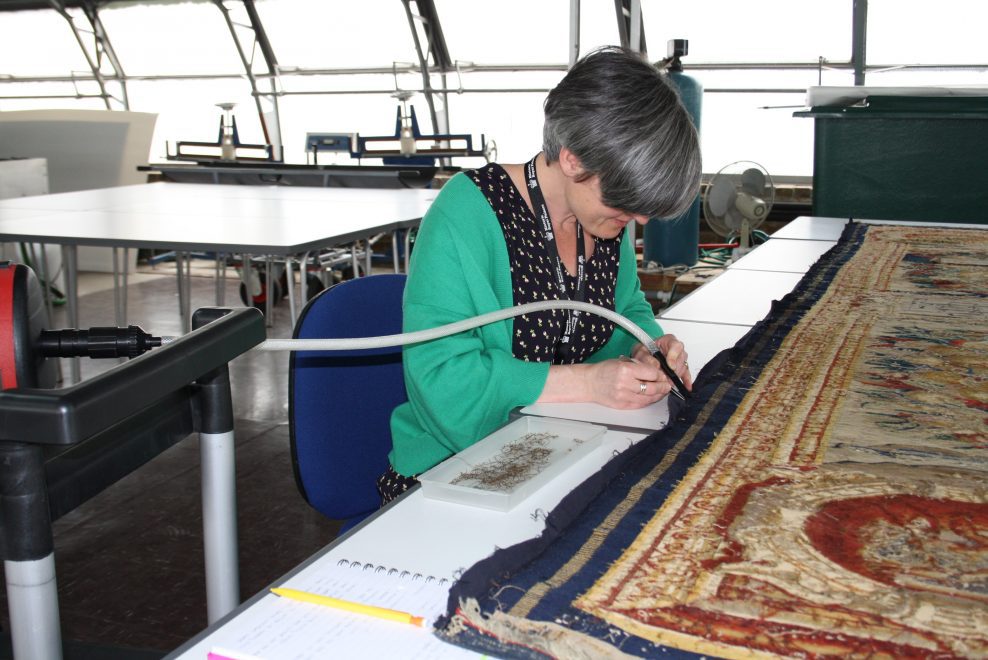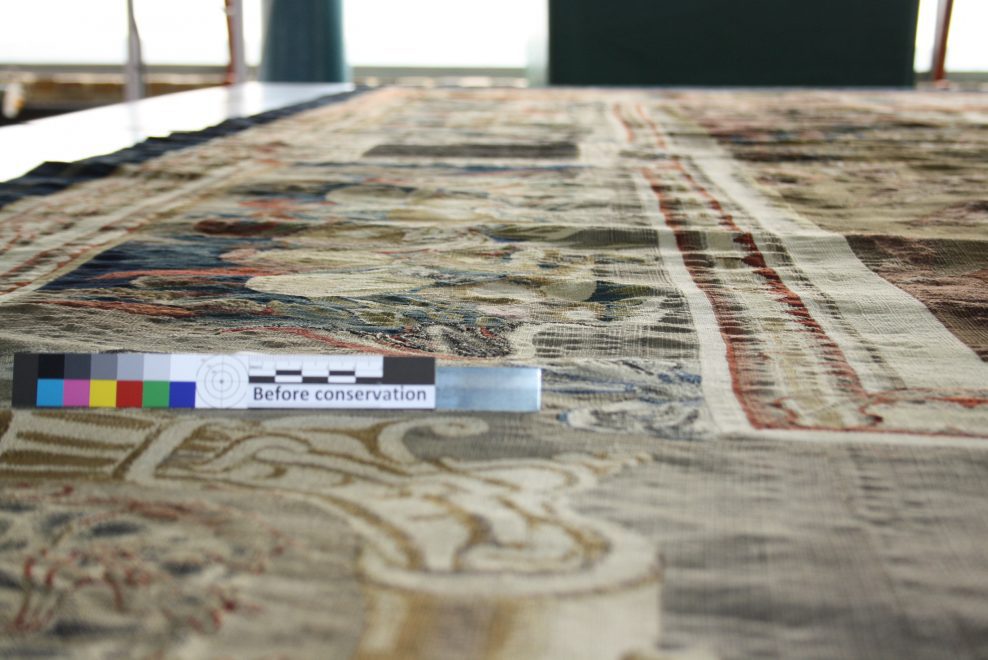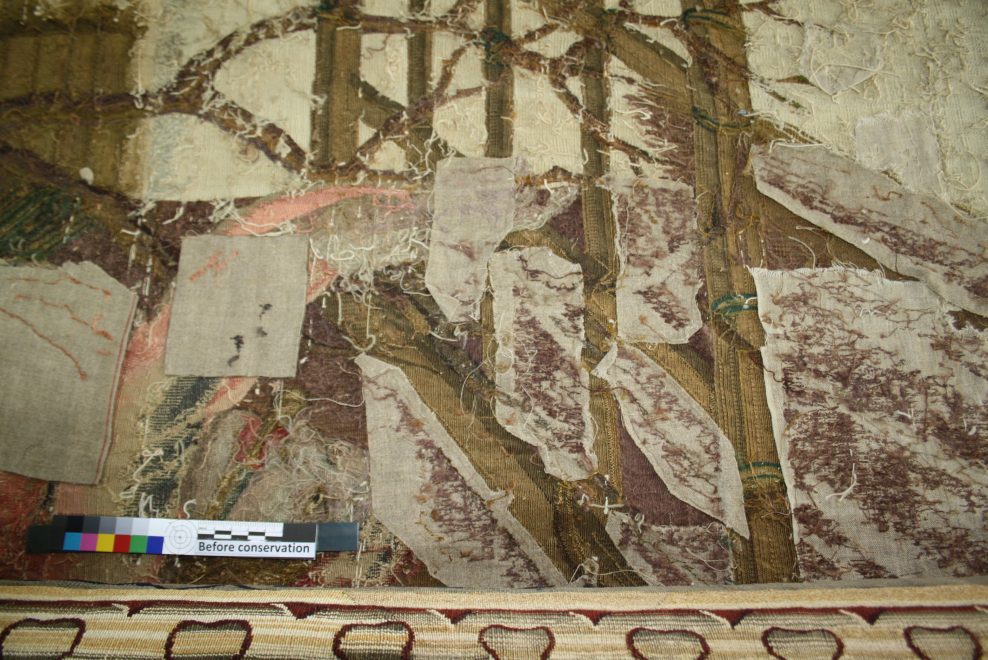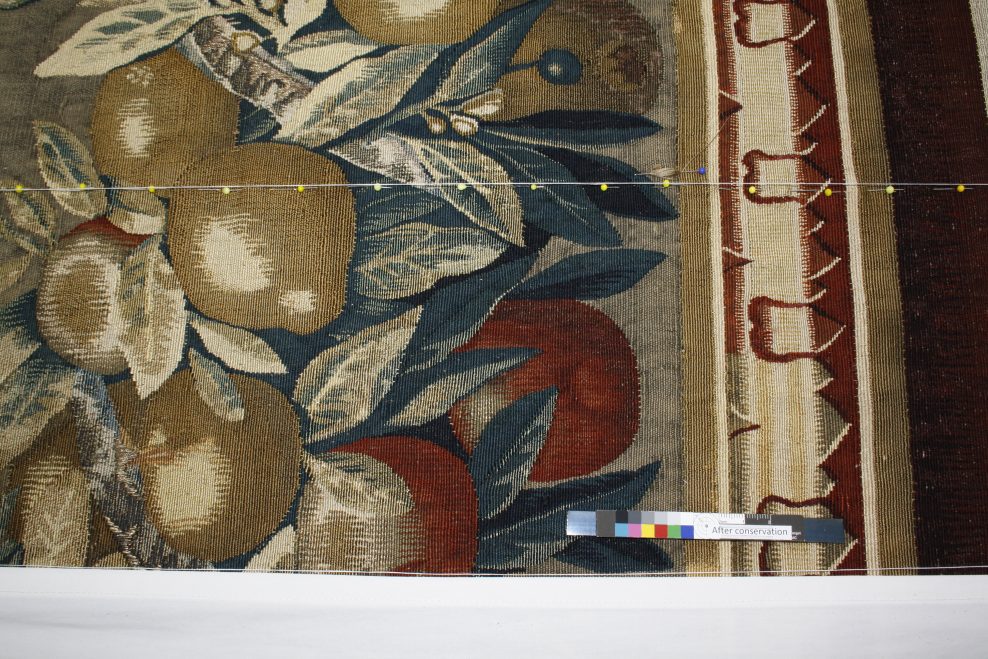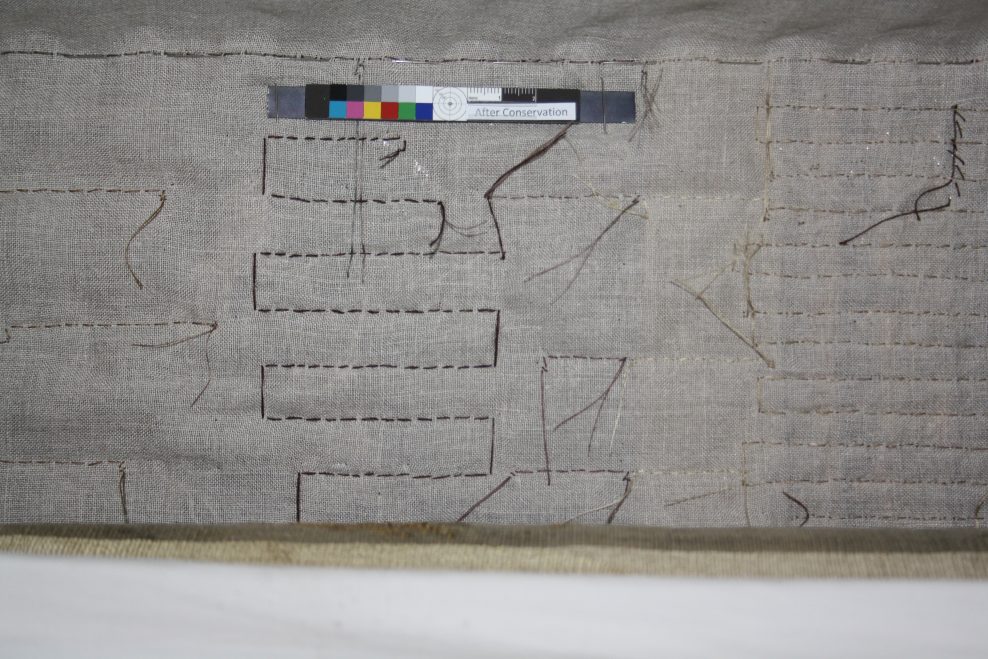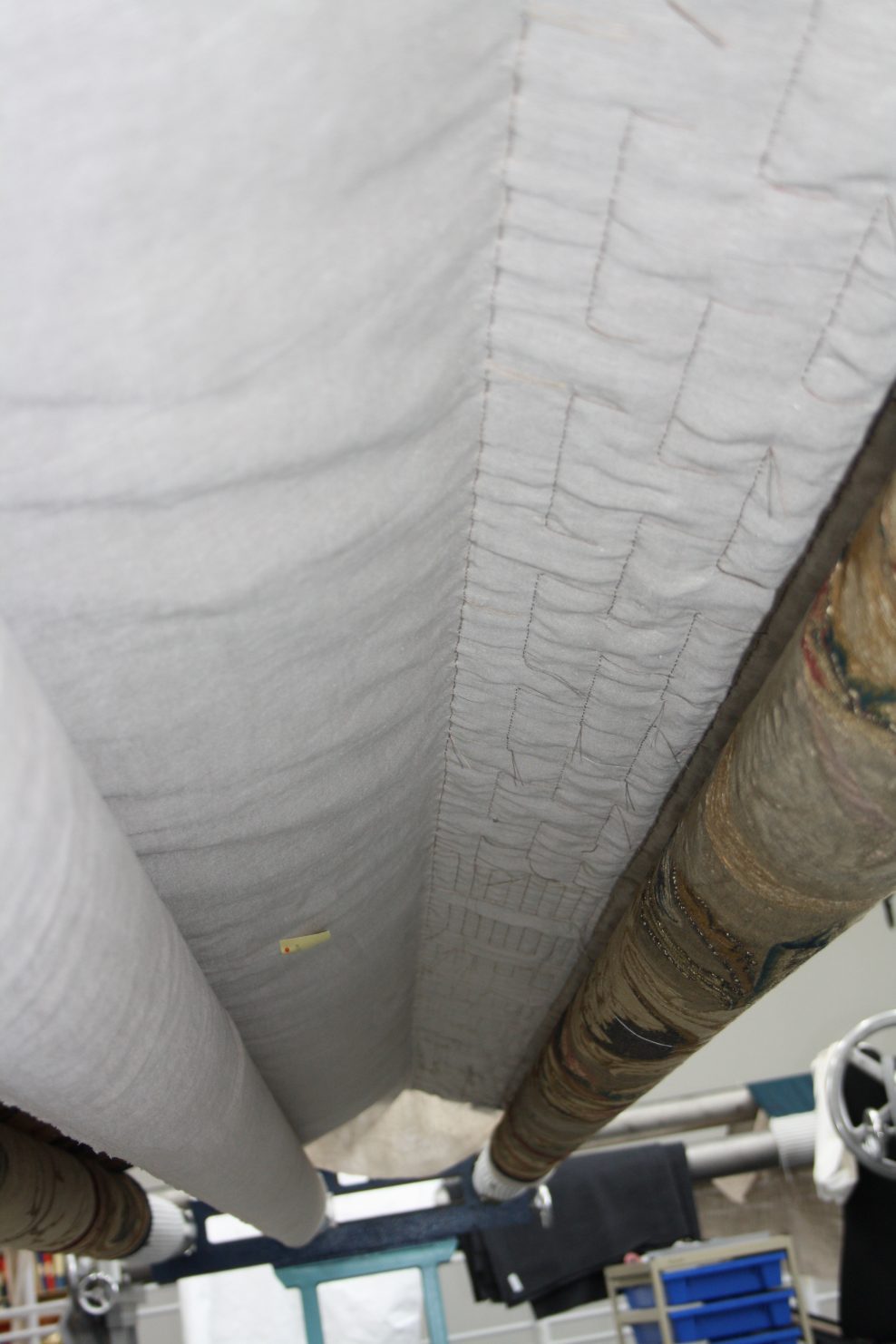Projects
17th Century Mortlake Tapestry
I was employed at Historic Royal Palaces (HRP) on a twelve month contract as a senior textile conservator. My role during that time was to project manage the conservation of a 17th Century Mortlake tapestry, which had been scheduled for conservation in the Conservation Collection Care (CCC) rolling programme. The tapestry was structurally stable but after many years on display was soiled with dust particles. The tapestry was cockled, with localised undulations. There were small areas of weft loss, resulting in the exposure of wool warps. Throughout the tapestry there was considerable restoration and patching of weak areas. Once the lining had been removed the extent of the patching and restoration work was evident from the back.
Options and considerations: As the tapestry was one of three, consistency as well as suitability was a consideration for treatment. The tapestry had been patched throughout, with some heavily stitched. These were supporting the restoration stitches from a previous treatment. After assessment I took the decision to remove patches that had little stitching thought them. Any patches that were heavily stitched and were considered integral, were to be left in place, but were to be trimmed. This would reduce the impact of dimensional changes and lessen the chances of detergent pooling between the patches and the tapestry during treatment.
There was a large area of cream silk down one side of the tapestry. I felt that this area required support as the silk was likely to deteriorate in the next 50 years faster than the surrounding wool areas. I carried out a literary review to determine the most suitable method of support and using this and the established grid method of support lines and the conservation couching guidelines, I devised a stitching pattern to support the area. All four corners of the tapestry had areas off loss. Drawing from previous experience and research, I took the decision to patch these areas to infill them visually and use laid couching to provide support.
Wet cleaning: After testing the tapestry was wet cleaned to raise the PH, rehydrate the fibres, reduce the ingrained soiling, and improve appearance. I worked with the science team, and we decided on a short wash cycle as the tapestry was not heavily soiled. Wet cleaning would also bring the treatment of the tapestry in line with the other two in the series, aesthetically and treatment wise.
Mentoring: I mentored entry level staff to work from novice to competent in tapestry conservation. I achieved this by using coloured pins to indicate different areas and notes to identify different stages of work. I organised the work plan, factoring in the time taken to train and supervise throughout the project. I worked with both novice and expert staff and refined my mentoring to reflect their experience. H&S: Risk assessments were generated and appropriate PPE used. Gloves and masks were worn whilst wet cleaning to protect from the Orvus spray. Correct positioning of chairs and use of footstools during loom work ensured that correct posture was retained.
Filming: In order to thoroughly record the process and to explain wet cleaning to the public, I organised the process to be filmed. I worked with external contractors assessing risk, organising security passes and developing a method statement. I collaborated closely with the digital team in the editing the footage. I felt that this not only documented the process for HRP, but it was also a way of explaining conservation to a wider audience. The footage was well received on both Facebook and YouTube.https://www.youtube.com/watch?v=o3xN3rqmfkk
All images copyright Historic Royal Palaces and HM The Queen Elizabeth II, 2022
